Energy gels and bars are great for day trips in the mountains. But, if you’re spending more than just a day out, odds are you’ll eventually want something more substantial (and warm) to eat, which often involves using a stove. Which stove, you ask? Well, that depends on what exactly you want to heat up. These days, there’s a camp stove to satisfy everyone, from those who simply want to boil water to forest-bound foodies. For the best option to cook your next backcountry breakfast, campsite cuisine, or mountaintop meal, keep reading.
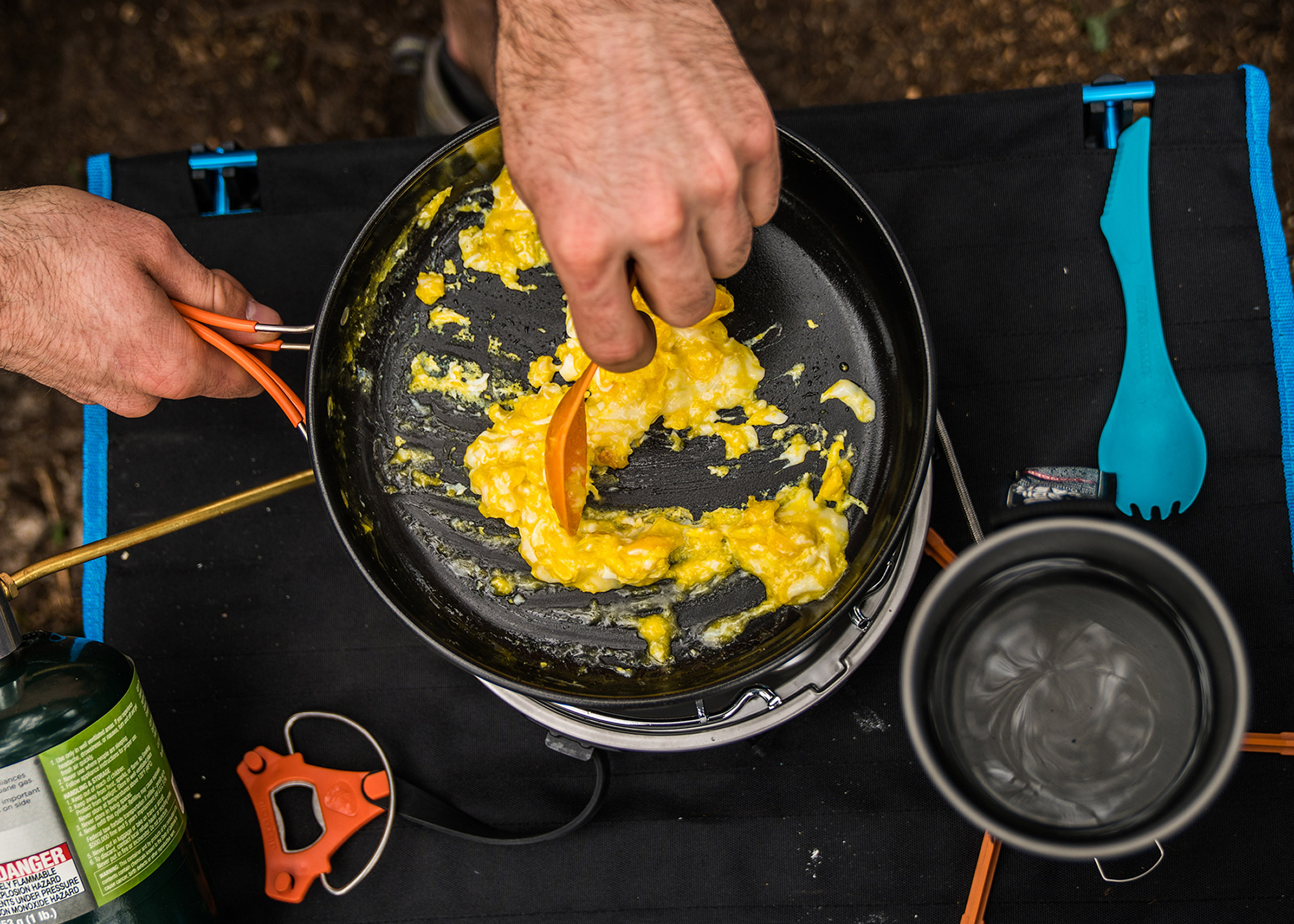
Fuel Type
Backpacking stoves are distinguished by fuel type, and fall into three main categories: canister, liquid fuel, and alternative fuel. Canister and liquid fuel stoves represent the majority you’ll see on the trail. However, in recent years, alternative fuel stoves have seen a surge in popularity.
Canister Stoves
Powered by prepackaged canisters holding a pressurized butane-propane blend, canister stoves are incredibly easy to use—just screw the stove to the canister and fire it up. Coming in a wide variety of shapes and sizes, canister stoves vary from simple, super-light burners to full integrated systems. Requiring very little maintenance (shy of changing fuel bottles), they deliver reliable performance in three-season conditions and are also quick to light. Big picture, you don’t have to worry about fuel leaking out of the bottle.
Canister stoves do have some drawbacks, though. For one thing, it can be difficult to gauge just how much fuel is left. Another issue, some super-light stoves have difficulty supporting a larger pot, while the larger, integrated systems may be tall and tip prone. Additionally, for models without built-in pressure regulators, cold weather or high altitudes can freeze and depressurize a canister, causing the stove to stutter. Also, compared to white gas, prepackaged fuel is expensive and may be harder to find outside of the United States. Lastly, the prepackaged canisters cannot be refilled and recycling them may be frustrating, as most municipalities have special rules in place.
READ MORE: How do I know how much fuel is left in my canister?
Pro Tip: If you’re going to use a canister stove in cold weather, storing the fuel canister in a warm place—your jacket pocket while you’re moving or your sleeping bag while you’re sleeping—will make it less likely to depressurize.
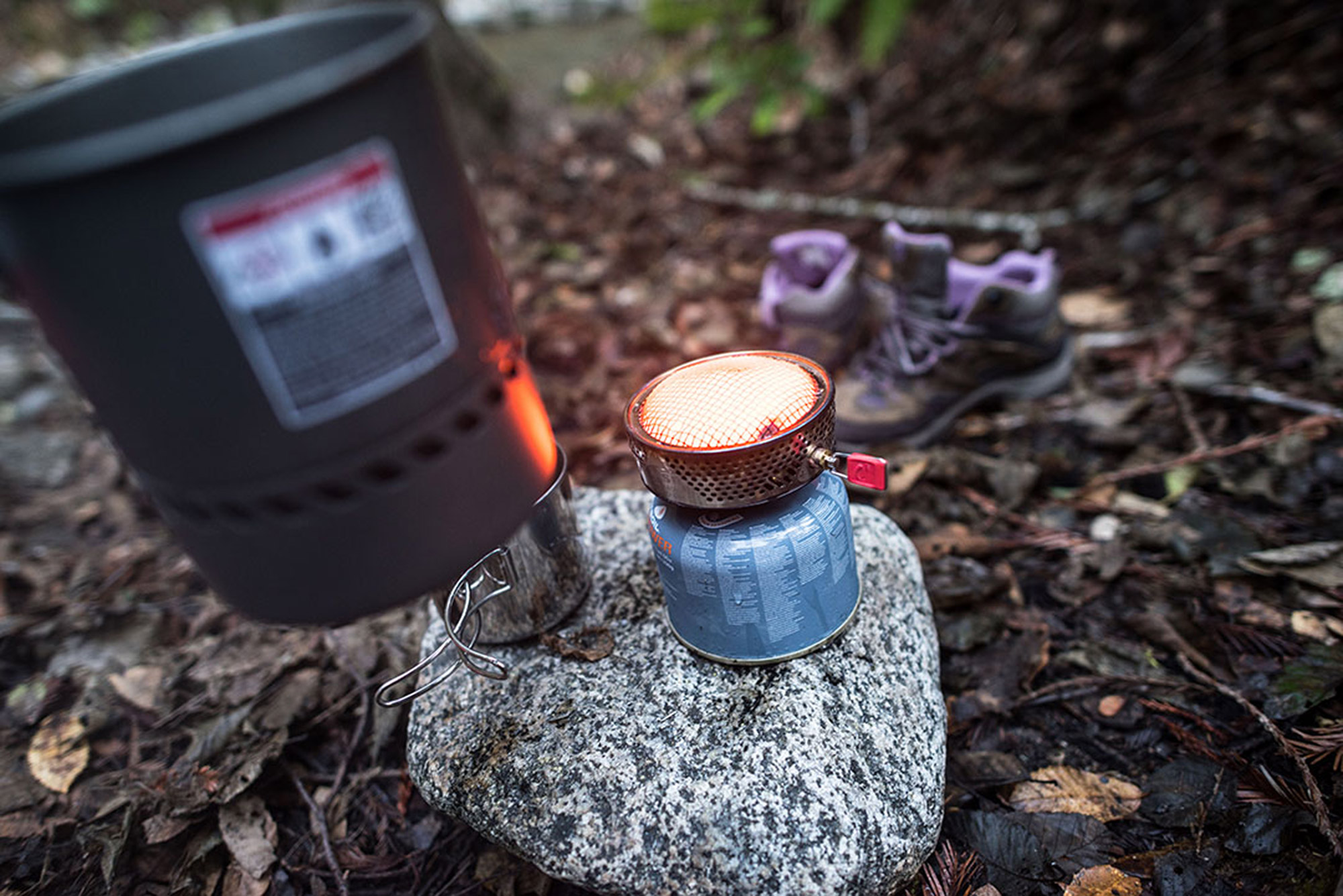
Integrated Canister Stoves
Liquid Fuel Stoves
Reliable and time tested, liquid fuel stoves are known for their versatility and ability to run in a wide variety of conditions. More commonly powered by white gas, some models, such as the venerable MSR Whisperlite International, use any kind of liquid fuel—kerosene and diesel included. This makes them popular with people who travel to locations where canisters or white gas could be hard to acquire. Unlike canister stoves, liquid fuel stoves use special refillable bottles. In turn, backpackers easily know much fuel they have at any given time, can reuse the same container, and only bring as much as they’ll need.
One downside is, they require priming, a finicky process. Liquid fuel stoves also need periodic maintenance. The jets and fuel hose can get clogged, especially when fuels other than white gas, which may have more impurities, are used, and the O-rings occasionally need to be replaced. Another drawback, liquid fuel stoves tend to be heavier and don’t pack as well as canister options. And, since spills suck, don’t forget to keep your fuel bottle sealed at all times when not in use.
Some stoves, like the MSR Whisperlite International, can operate using either liquid or canister fuels, making them even more versatile.
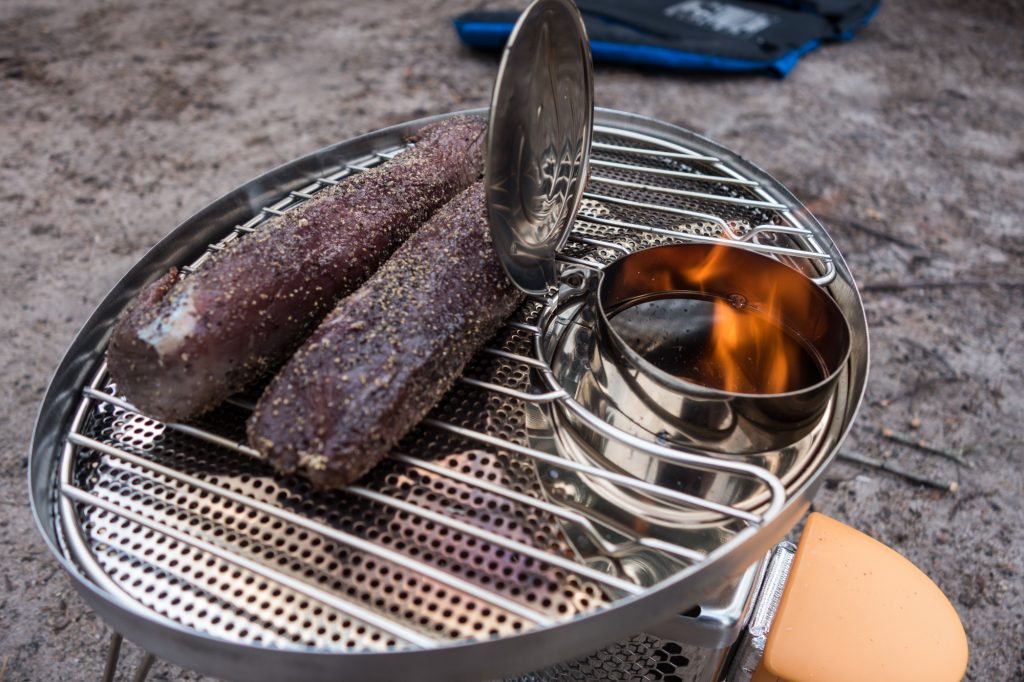
Alternative Fuel Stoves
Alternative stoves use everything from wood to denatured alcohol to solid fuel tablets. Wood-powered stoves, for instance, burn twigs and small sticks and let you hike without carrying a fuel canister or bottle. Denatured alcohol stoves are super-lightweight, have very few parts, and use a fuel that is inexpensive and readily available. Solid fuel stoves are light and inexpensive but, as a drawback, may leave a residue on your cook pot.
In recent years, alternative fuel stoves have seen an increase in popularity. But, because they each have unique limitations—most notably, they do not burn as hot or boil water as quickly as canister or liquid fuel stoves—their use remains niche. Still, they make nice complementary stoves to more traditional options.
GO: Canister Stoves | Liquid Fuel Stoves | Canister or Liquid Fuel Stoves
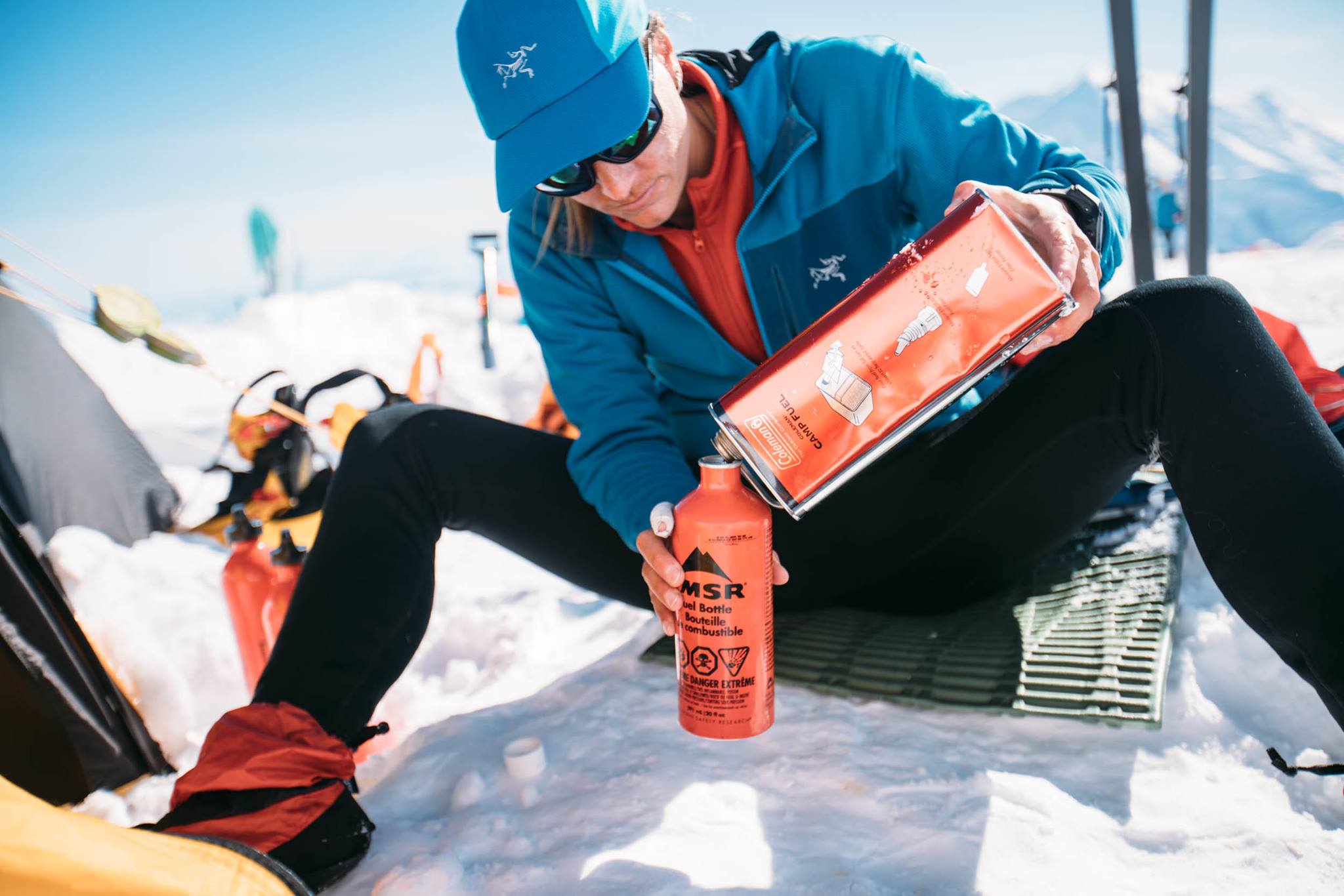
Other Considerations
When choosing your next backpacking stove, fuel type is just one consideration. Weight, boiling time, simmering ability, and lighting method are other factors that should influence your purchase.
Weight
It’s easy to be lured by a stove’s lighter weight. However, when comparing stove weights, remember to account for the fuel and required cook set, especially when comparing standard models to integrated systems.
Boiling Time
Almost all backpacking stove manufacturers tell you how long it takes for a particular stove to boil a liter of water. And, if boiling time is your most important criterion—say, for that cup of coffee or that Good To-Go Thai Curry—consider an integrated canister stove. Their extremely efficient transfer of heat from the burner to the pot often results in the fastest boiling times. Just don’t expect to replicate these exact results on your next backpacking trip on the Pemi: Stoves are typically tested at sea level in 70-degree Fahrenheit temperatures with no wind.
Simmering
For a stove that does more than boil water, you’ll want to choose a model with a simmering option. Liquid fuel stoves generally offer the easiest degree of heat control. However, with a little practice, more complex dishes can even be cooked on an integrated system.
Lighting Method
Many stoves today ignite via a button (or “piezo”). This handy feature increases the ease of operation, but we still suggest carrying matches or a lighter just in case. However you light it, once your stove is going, don’t ever cook inside the tent—carbon monoxide kills!
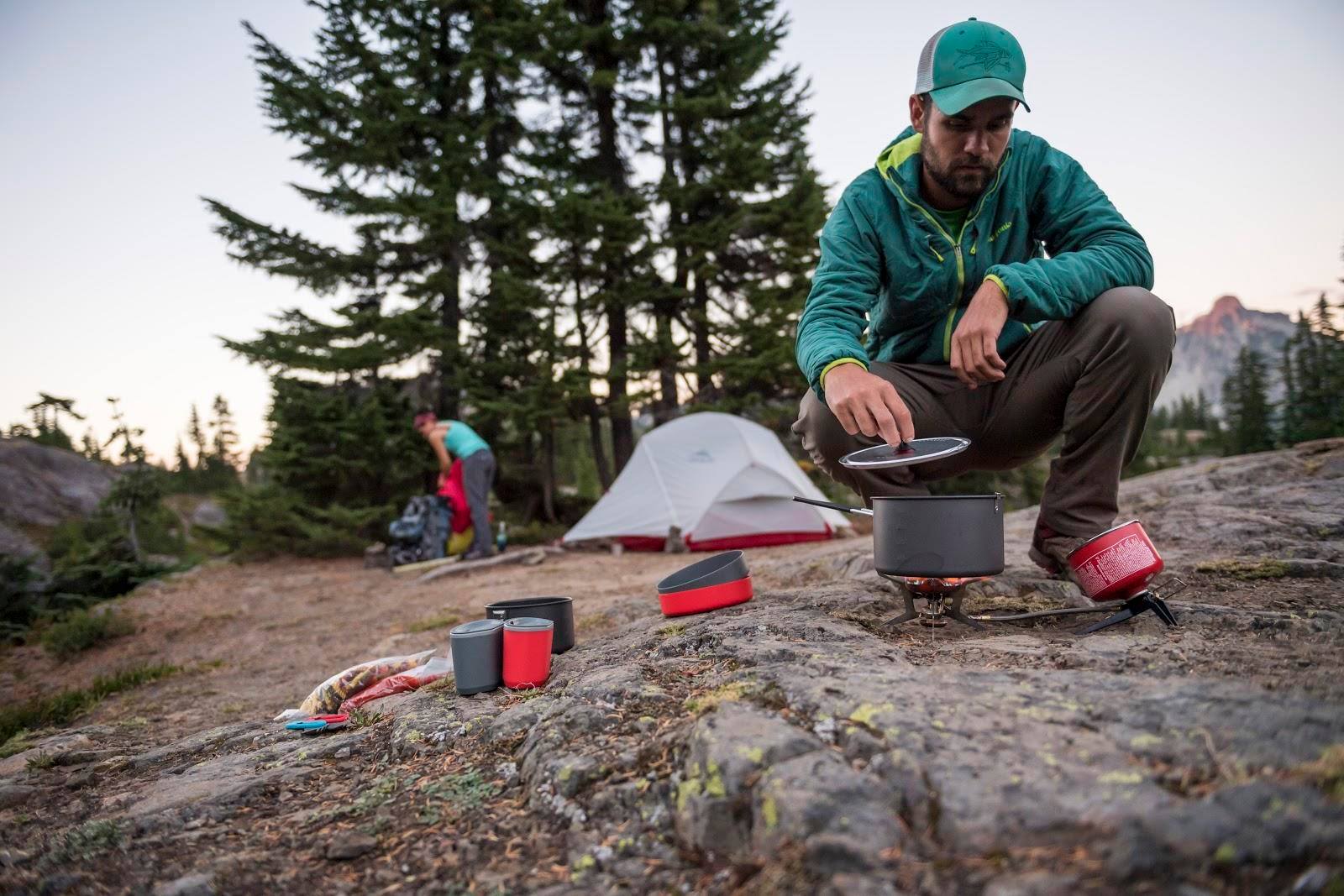
So, Which Stove Should I Get?
Although most models you’ll find at EMS are fairly versatile, here are a few activity-based suggestions:
Solo or fast-and-light: Consider a simple canister stove. If that’s not light enough, check out a denatured alcohol or solid fuel option.
New to backpacking or just eating freeze-dried meals: Integrated systems are easy to use and boil water very efficiently.
Going out with a large group: Liquid gas stoves are perfect for large groups, and for this reason, they’ve been a staple of NOLS and Outward Bound trips for years. Pro tip: Going out with a large group and love coffee? Supplement your liquid gas stove with an integrated stove for quickly brewing that crucial cup of coffee in the morning.
Can’t decide: Check out the MSR Whisperlite Universal, which can use either IsoPro canisters or liquid fuel.
Tim Peck and Doug Martland
Tim and Doug met long ago at the Eastern Mountain Sports in Canton, Massachusetts. Bonding over a love of slick Quincy Quarry granite, White Mountain sufferfests, and scheming up adventures while folding tee-shirts, today Tim and Doug collaborate to write about their favorite outdoor activities and occasionally get nostalgic about tee-shirt tables.




